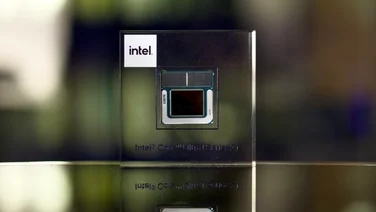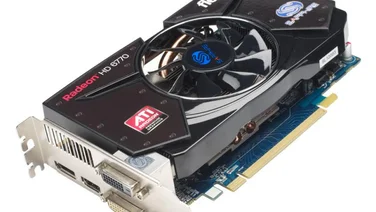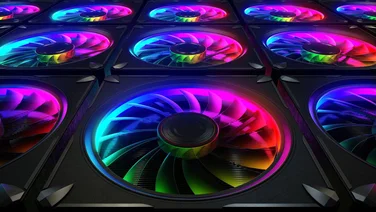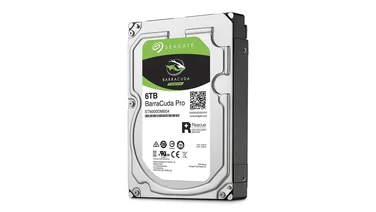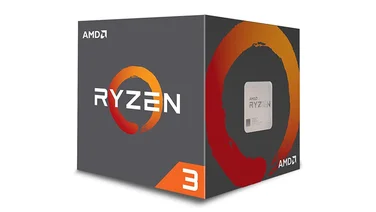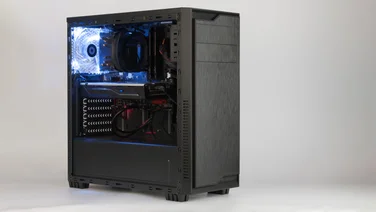To help us provide you with free impartial advice, we may earn a commission if you buy through links on our site. Learn more



- Faster performance than previous generation
- More cores for superior multitasking
- Pricey compared with equivalent Ryzen CPUs
- You'll need a new motherboard
Intel has been on the back foot in 2017. The momentum has all been with its old rival AMD, whose Ryzen range of CPUs offer more raw processing power than Intel’s Kaby Lake chips, and at lower prices.
But things move quickly in the processor business. Intel’s new eighth-generation family of chips, dubbed Coffee Lake, bring more cores and higher clock speeds than ever before. Is it enough to topple Ryzen and reclaim the CPU crown?
READ NEXT: AMD Ryzen 1800X review
Intel Coffee Lake: What you need to know
For now, there are six Coffee Lake processors to choose from: two Core i3 models, two Core i5s and a pair of high-end Core i7 chips. All of them are full-sized, high-power processors for desktop PCs – nothing’s been announced yet for laptops.
Architecturally, Coffee Lake chips are extremely similar to last year’s Kaby Lake processors. They use the same core design, and they’re manufactured in the same 14nm process. Even so, there are some significant differences.
The big one is the number of cores you get. The new Core i7 models have been bumped up from four cores to six, with Intel’s Hyper-Threading technology allowing them to handle twelve processes at once. The new Core i5 chips also have six cores, but no Hyper-Threading, while the Core i3 models have seen their core count doubled from two to four.



Manufacturing refinements also enable Coffee Lake chips to run at higher clock speeds than their predecessors. The top-end Core i7-8700K comes with a stock speed of 3.7GHz and a maximum Turbo Boost speed of 4.7GHz, up from the 4.5GHz of last year’s model. It’s unlocked too, so you can push it higher if you wish.
Coffee Lake isn’t a cheap and simple upgrade for existing desktops, however. The extra cores and higher speeds come with greater power demands than previous chips. That means you won’t be able to drop a Coffee Lake processor into an existing motherboard. You’ll have to buy one based on the new 300-series chipset, instead.
Intel Coffee Lake: Price and competition
Coffee Lake covers a whole spread of price points. At the high end, the superfast Core i7-8700K is expected to launch at around £355, while the unlocked Core i5-8600K comes in at £250. The low-end Core i3-8100, with four cores and a 3.6GHz clock speed, costs just £115.
The main competition is, of course, AMD’s Ryzen range. Here, too, there’s a range of chips to suit every budget, and whichever you choose you’ll normally get more cores for your money than Intel. The Ryzen 7 1700 is a particular bargain, with eight cores and sixteen threads for just £265. It’s officially clocked at 3.7GHz, but since all Ryzen processors are unlocked you can invariably push it higher.
In the mid-range, the Ryzen 5 1600X offers six cores at 3.6GHz, but unlike the Core i5 it includes AMD’s SMT technology, allowing the chip to handle twelve simultaneous threads and, at £217, it’s quite a bit cheaper than the Core i5. At the low end of the scale, the Ryzen 3 1200 offers four cores, like the new Core i3 models, but again uses SMT to double its throughput. It’s also cheaper than the Intel, at £95.
One thing to note, however, is that Ryzen CPUs don’t include built-in graphics, while Intel’s do. If you don’t already have a graphics card, an Intel chip could save you some money in that regard.



Intel Coffee Lake: Performance
Although Intel’s chips don’t have as many cores as their Ryzen rivals, the cores themselves have historically been more powerful than AMD’s, giving Intel the edge in lightly-threaded tasks. Now that Coffee Lake makes those cores run faster, the gap should be smaller in multi-threaded tasks, too.
To find out what the new chips are capable of, I put the high-end Core i7-8700K through our regular desktop media benchmarks, running on Windows 10 64-bit with 8GB of DDR4-2400 RAM. For the first run, we left the CPU at its stock speeds and saw scores of 163 for image editing, 202 for video editing and 226 for multitasking, for an overall score of 208.
That’s a lot of power, and a notable step up from Kaby Lake. Systems based on the last-generation Core i7-7700K have tended to score around 180 overall. However, it’s not enough to unseat AMD. Ryzen 7 1700 desktops tend to score around 240 overall at stock speed; with a high-end Ryzen 7 1800X CPU we’d expect to see an overall score of 270 or more.
To see if the Intel chip could catch up, I tried overclocking. A new feature in the 300-series chipset allows you to set the maximum Turbo Boost ratio for each core individually so, if you have the time and the inclination, you can experiment and run every core at the absolute fastest speed it can stably support. For simplicity, though, we set all cores to the same frequency.
Even then, I was pleasantly surprised to find that my test CPU remained stable at speeds up to 5.1GHz – and that’s using a stock Intel air cooler. However, thermal throttling quickly kicked in, meaning I saw almost no real improvement in performance: the overall benchmark score merely ticked up to 212. It looks like you’d have to resort to a pricey liquid cooling system to get a significant performance uplift.
Intel Coffee Lake: Graphics
Like the main CPU core, the UHD 630 graphics processor in the new Coffee Lake chips is fundamentally the same as in last year’s Kaby Lake chips. However, it’s been updated with native support for HDR 4K video and the clock speeds have been nudged upwards as well.
As a result, it’s the most powerful integrated GPU Intel has yet produced. That doesn’t mean you can use it to play high-end 3D games, however – not without dialling the detail settings right down. To get Metro Last Light: Redux up to a playable frame rate, I had to reduce the screen resolution to 720p and disable motion blur and anti-aliasing. Even then it chugged along at an only-just-acceptable 36fps.
Intel Coffee Lake: Verdict
Intel’s new Coffee Lake chips are certainly more powerful than their predecessors – the extra cores and higher clock speeds see to that. However, AMD’s Ryzen chips still deliver more bang-per-buck and, even if you’re already using a recent Intel processor, the new chipset requirement means you can’t save money by keeping your existing motherboard.
That doesn’t mean the Coffee Lake is a duff product, however. There’s ample power here to tear through almost any task, and while the GPU isn’t powerful enough for hardcore gaming, it allows Coffee Lake to form the heart of a quiet, simple system. Once the launch period is over, we wouldn’t be at all surprised to see a price drop to bring Coffee Lake into line with Ryzen – and if that happens it will be a very tempting alternative.

